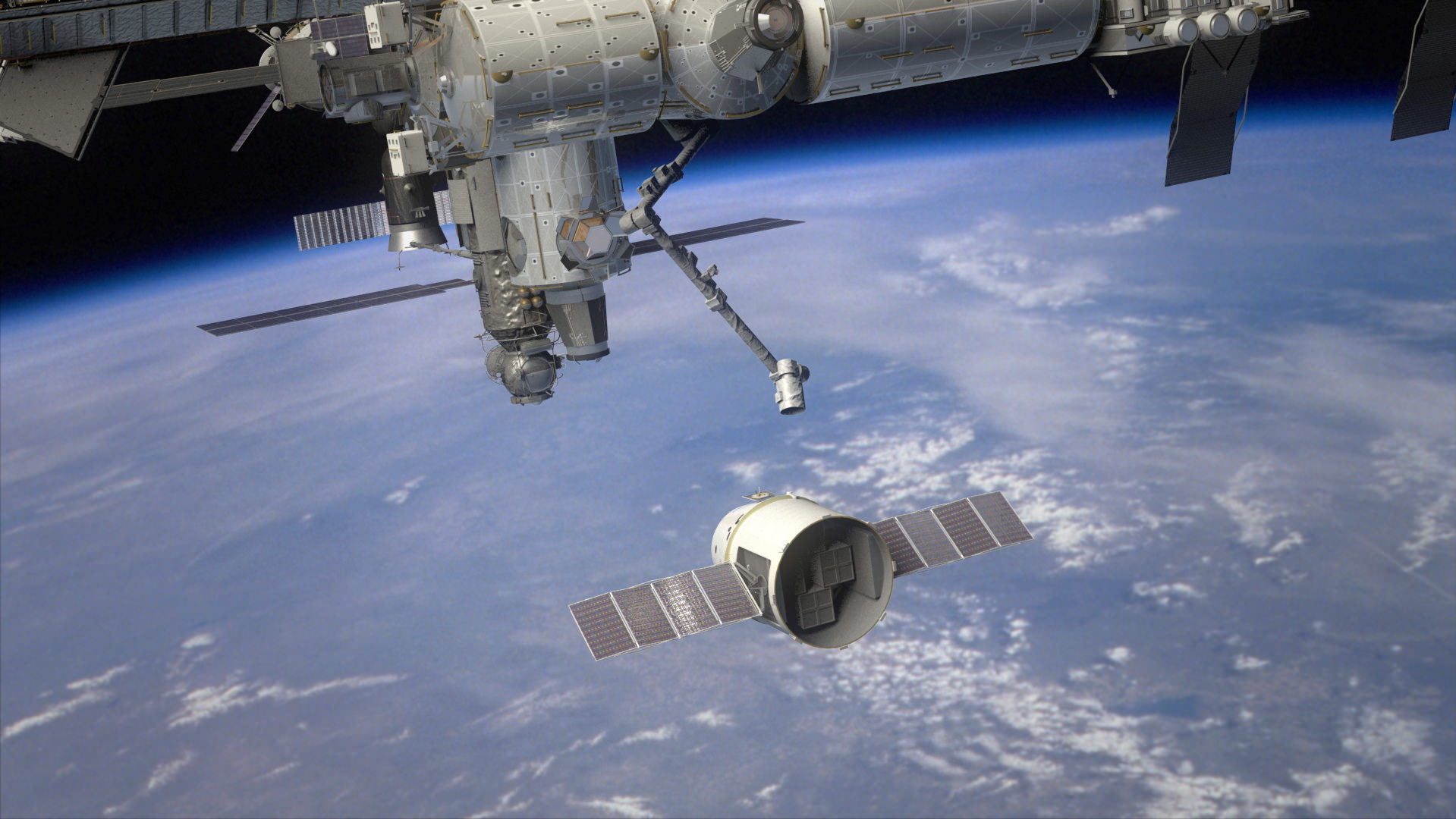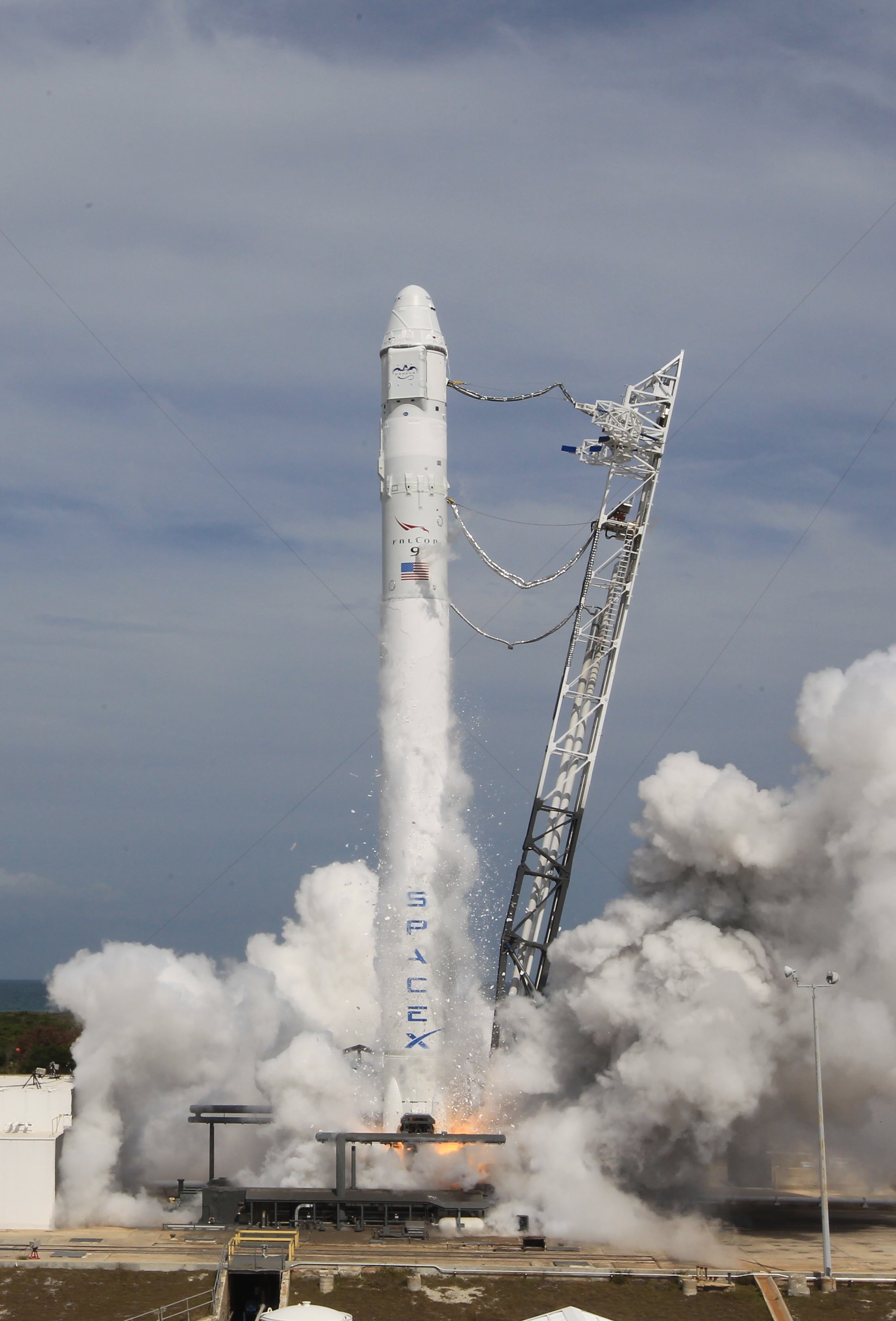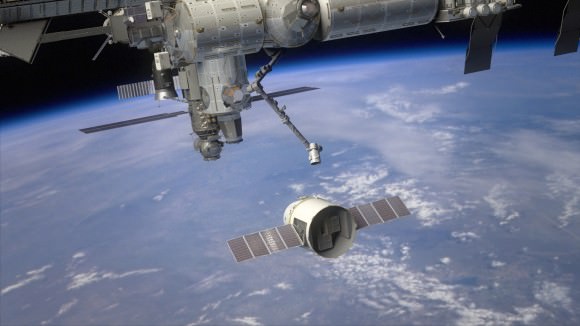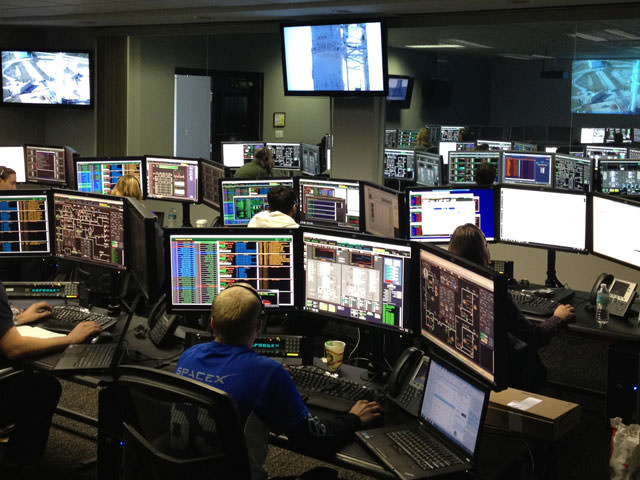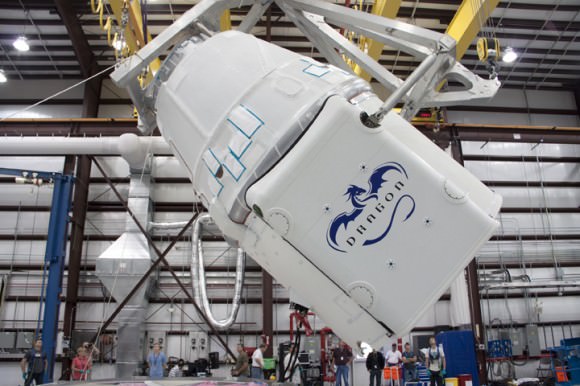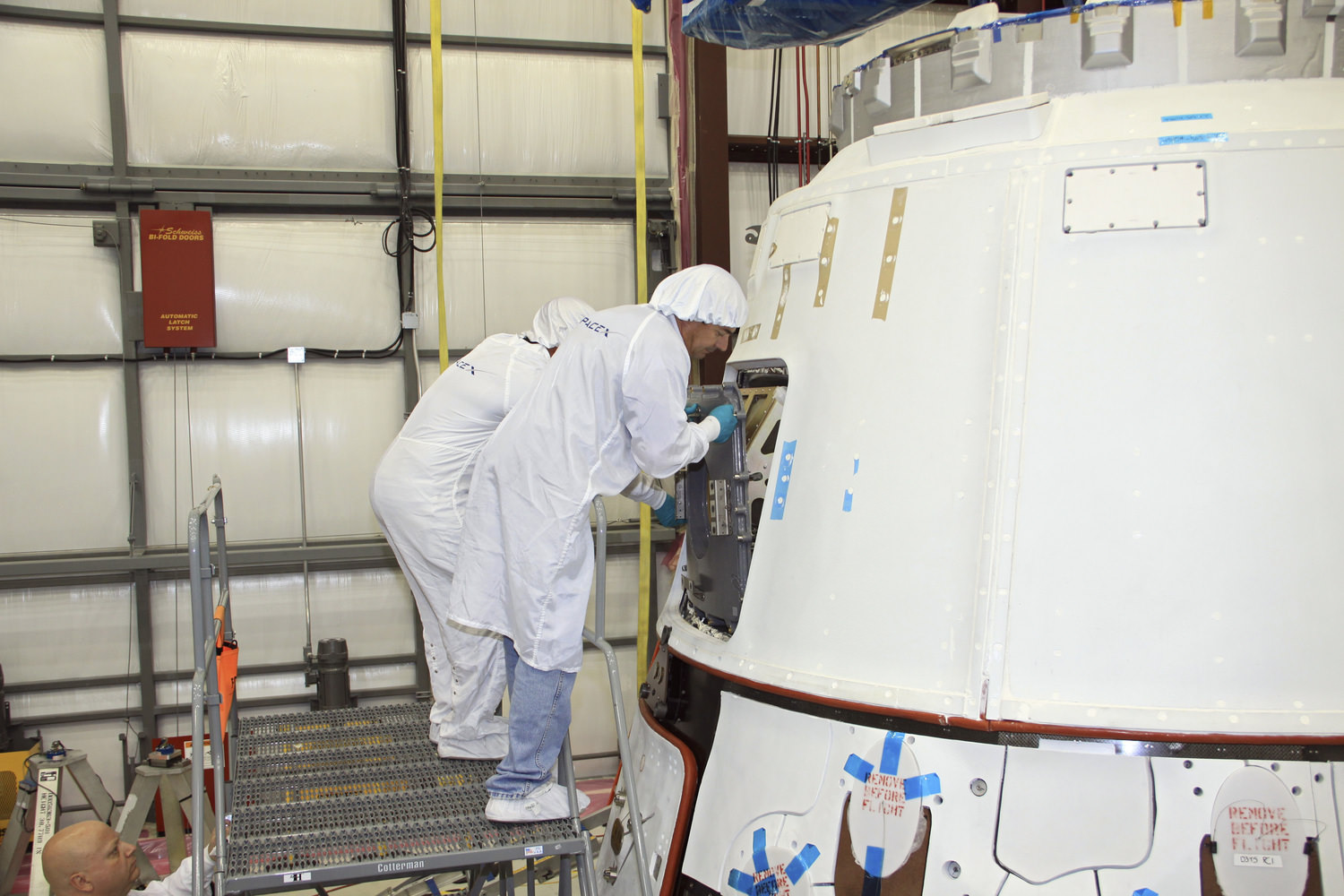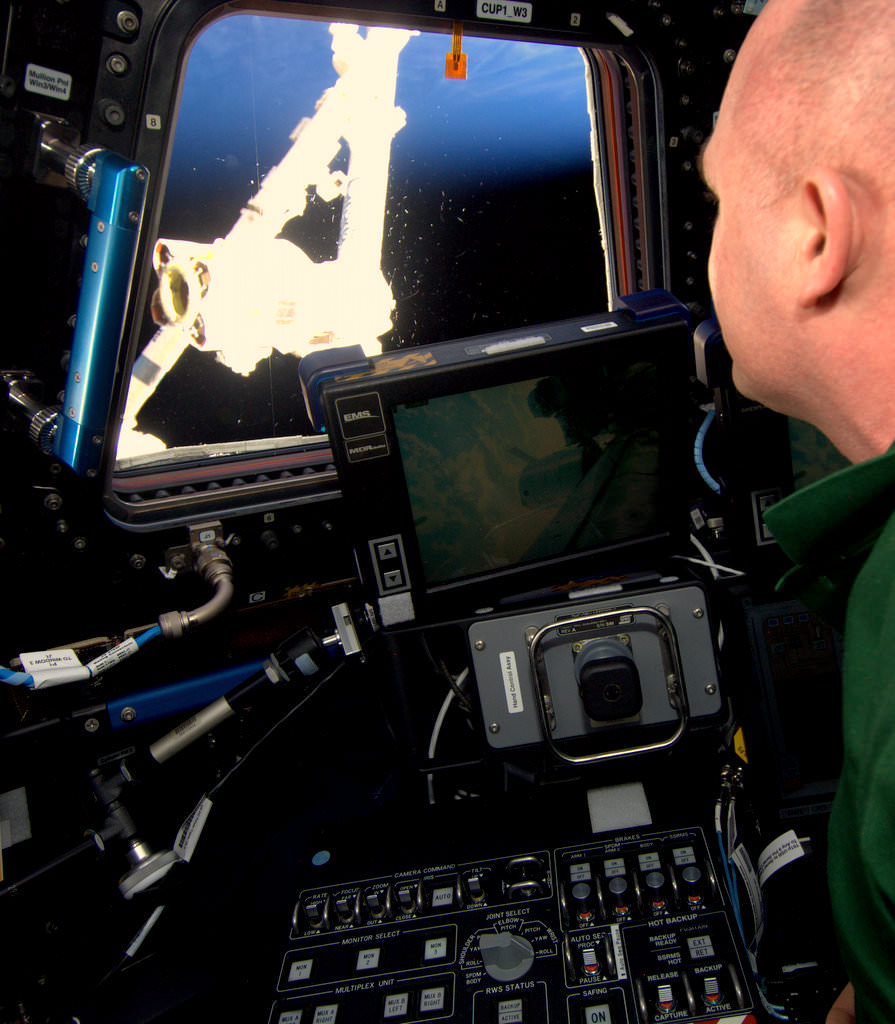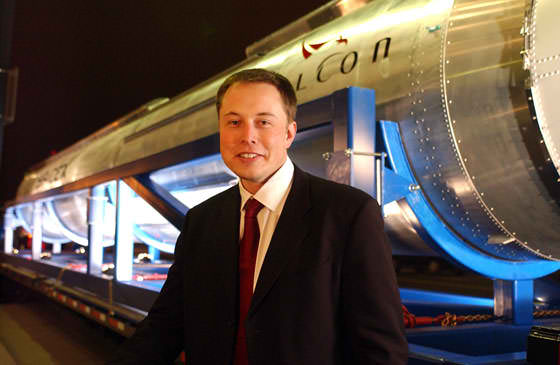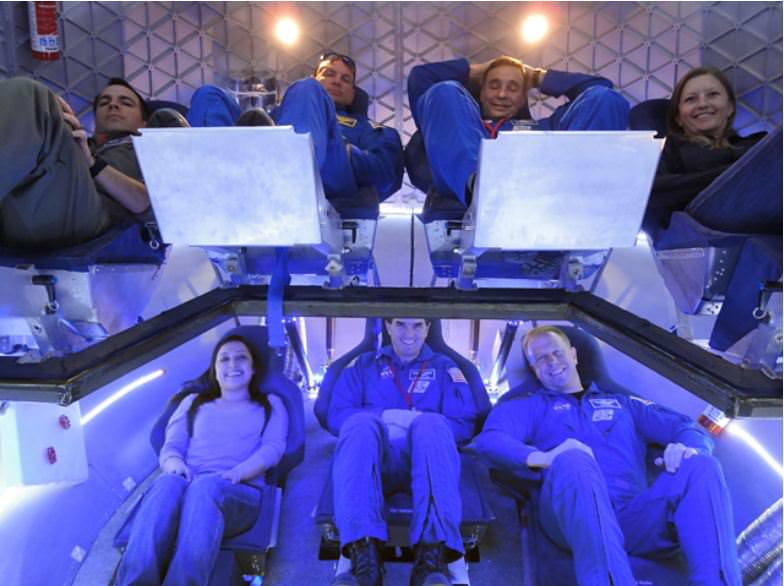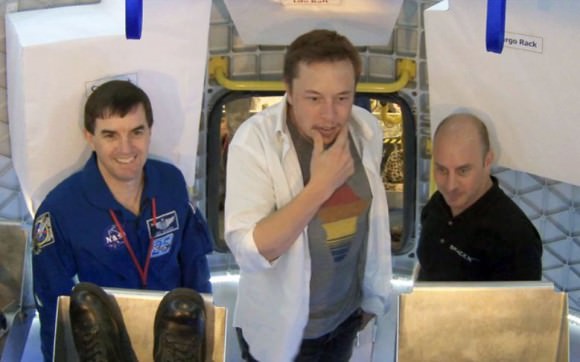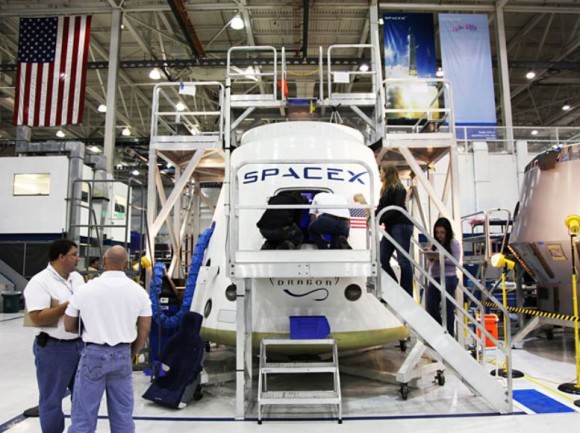[/caption]
In less than 48 hours, SpaceX is primed to make history and launch the first ever commercial rocket and spacecraft to the International Space Station (ISS) early Saturday morning on May 19.
Following today’s Launch Readiness Review (LRR), SpaceX was just given the official “GO” from NASA to proceed with the blastoff of the Falcon 9 at 4:55 a.m. EDT (0855 GMT) from Space Launch Complex-40 on Cape Canaveral Air Force Station in Florida. This also marks the first night time liftoff of the Falcon 9 rocket.
“Just passed final launch review with NASA”, SpaceX CEO Elon Musk tweeted this evening. “All systems go for liftoff on Sat morn”.
The SpaceX developed Dragon cargo resupply spacecraft is bolted on top of the two stage Falcon 9 rocket and stands 157 feet tall for the mission dubbed “COTS 2”. The Falcon 9 booster generates 1 million pounds of thrust
The official Air Force weather forecast gives a 70% chance of acceptable conditions for launch. The primary concern for launch day is a violation of the Cumulus Cloud Rule. On the heels of a significant drought, stormy weather has rolled into the Florida Space Coast and thunder is striking the area at the moment.
In the event of a launch scrub, the next launch opportunity comes in three days on May 22.
The launch will be broadcast live on NASA TV and via SpaceX Webcast at http://spacex.com
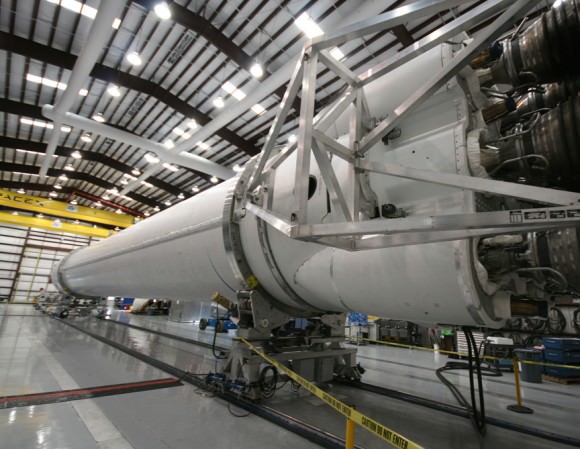
Technicians plan to roll the Falcon 9/Dragon duo out to the seaside launch pad tonight. The rocket will be moved on rail tracks about 600 feet from the processing hanger to the pad and vertically erected.
The purpose of Dragon is to carry supplies up to orbit and dock at the ISS and partially replace the capabilities of NASA’s now retired space shuttle. Dragon is a commercial spacecraft designed and developed by SpaceX.
SpaceX is under contract with NASA to conduct twelve resupply missions to the ISS to carry cargo back and forth for a cost of some $1.6 Billion.
The Dragon spacecraft is loaded with nearly 1200 pounds of non-critical cargo such as food and clothing on this flight. A collection of student experiments, commemorative patches, pins and emblems will also be on board Dragon’s upcoming test flight.
On Friday, Ken will be reporting from Space Launch Complex-40 on Cape Canaveral.

